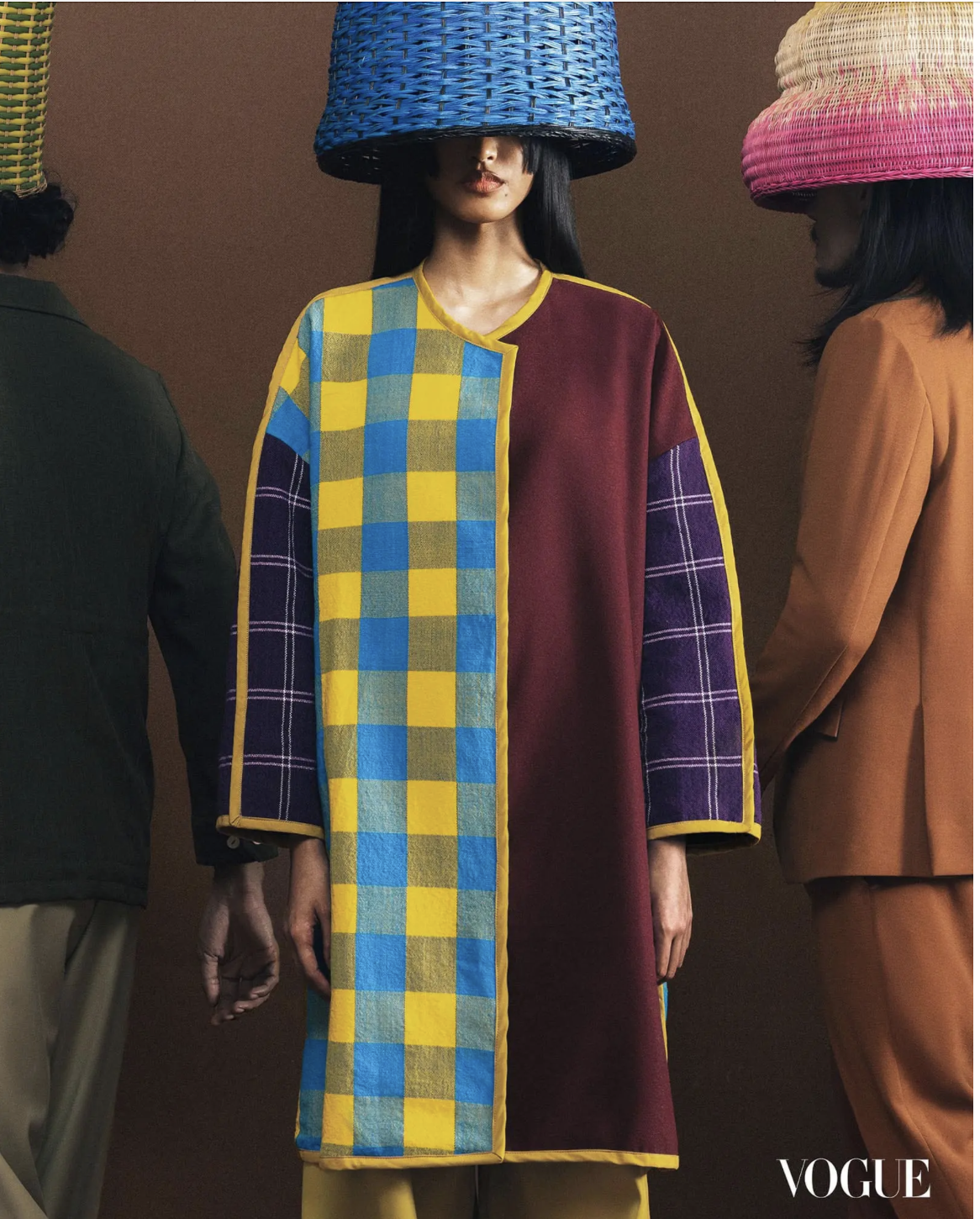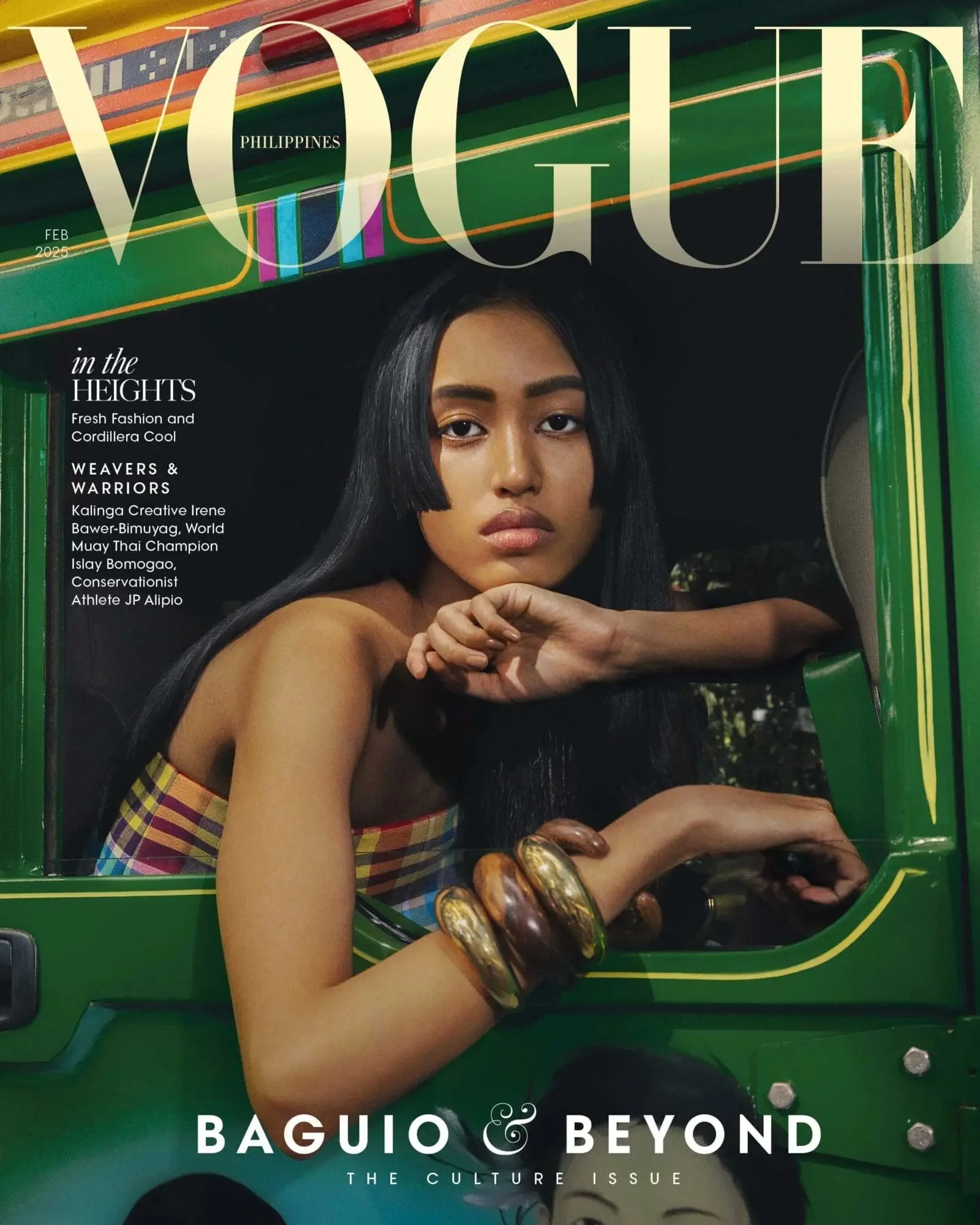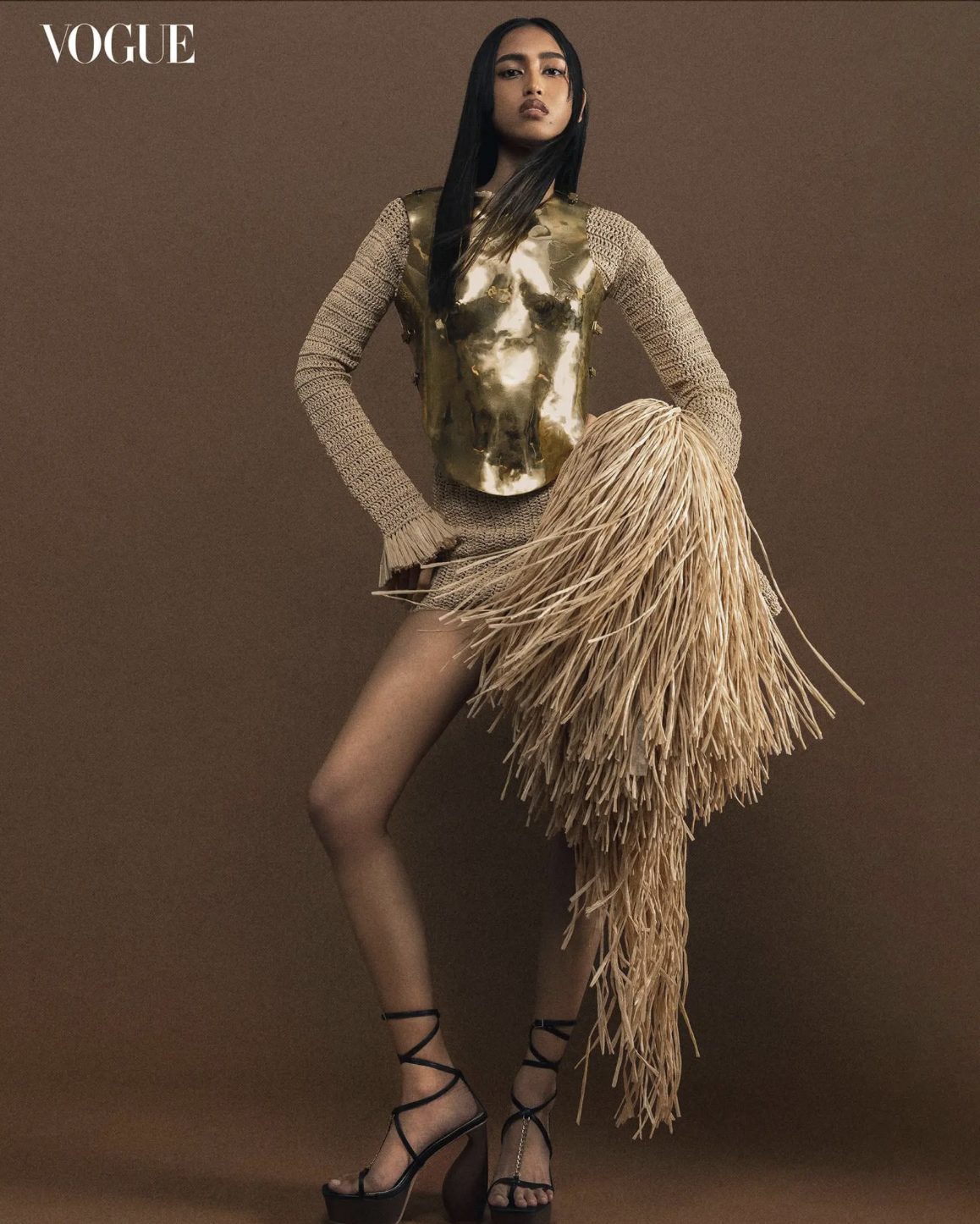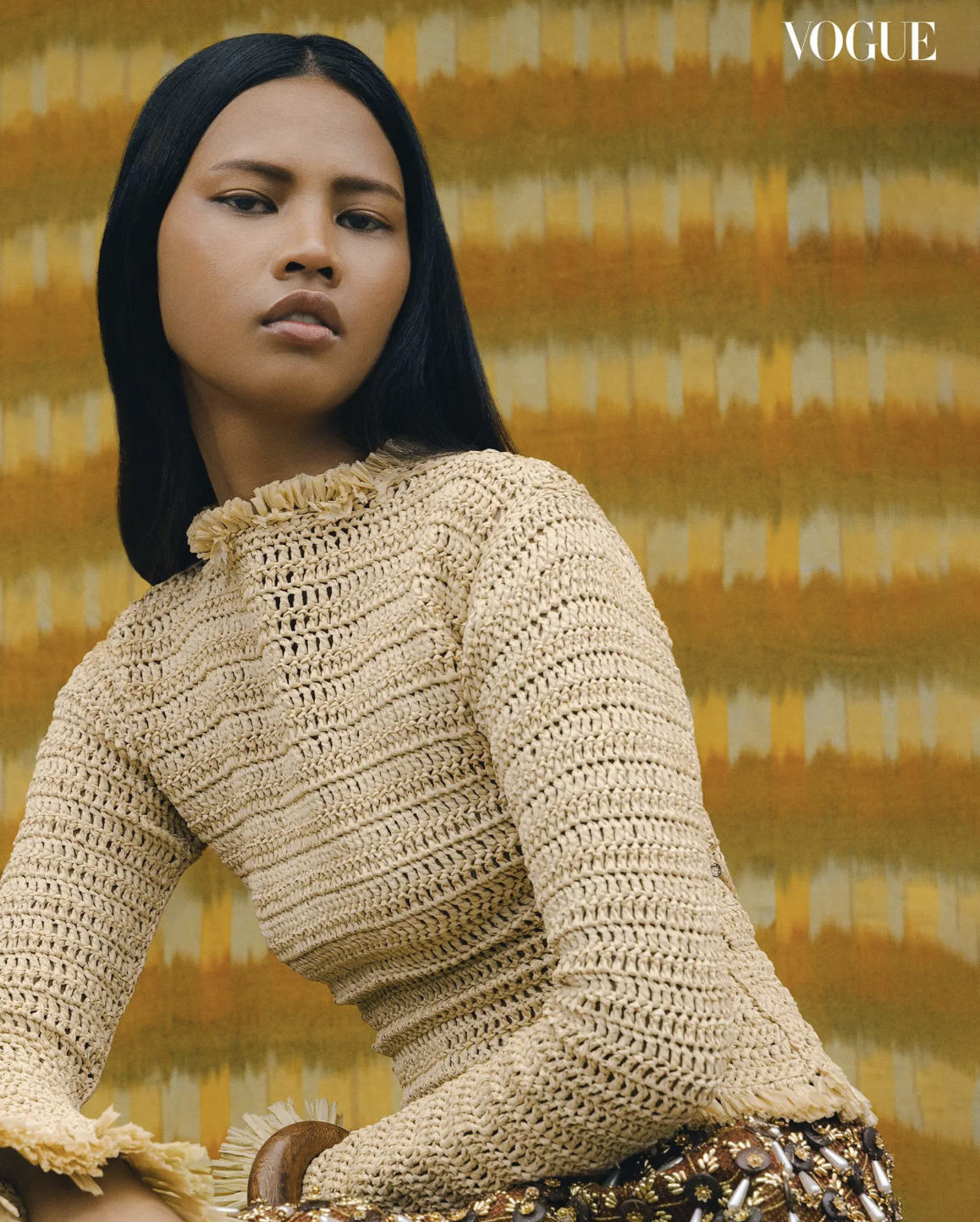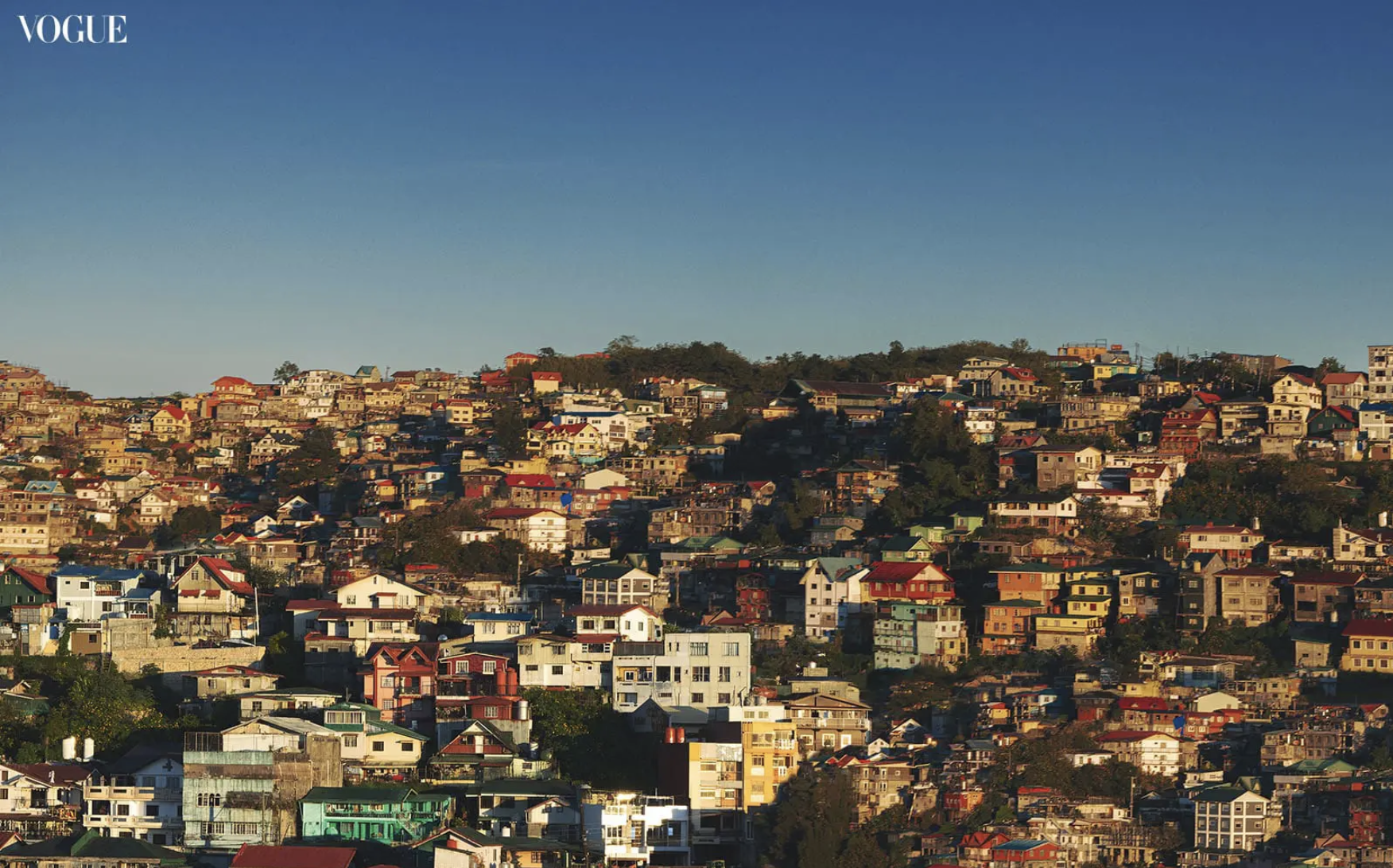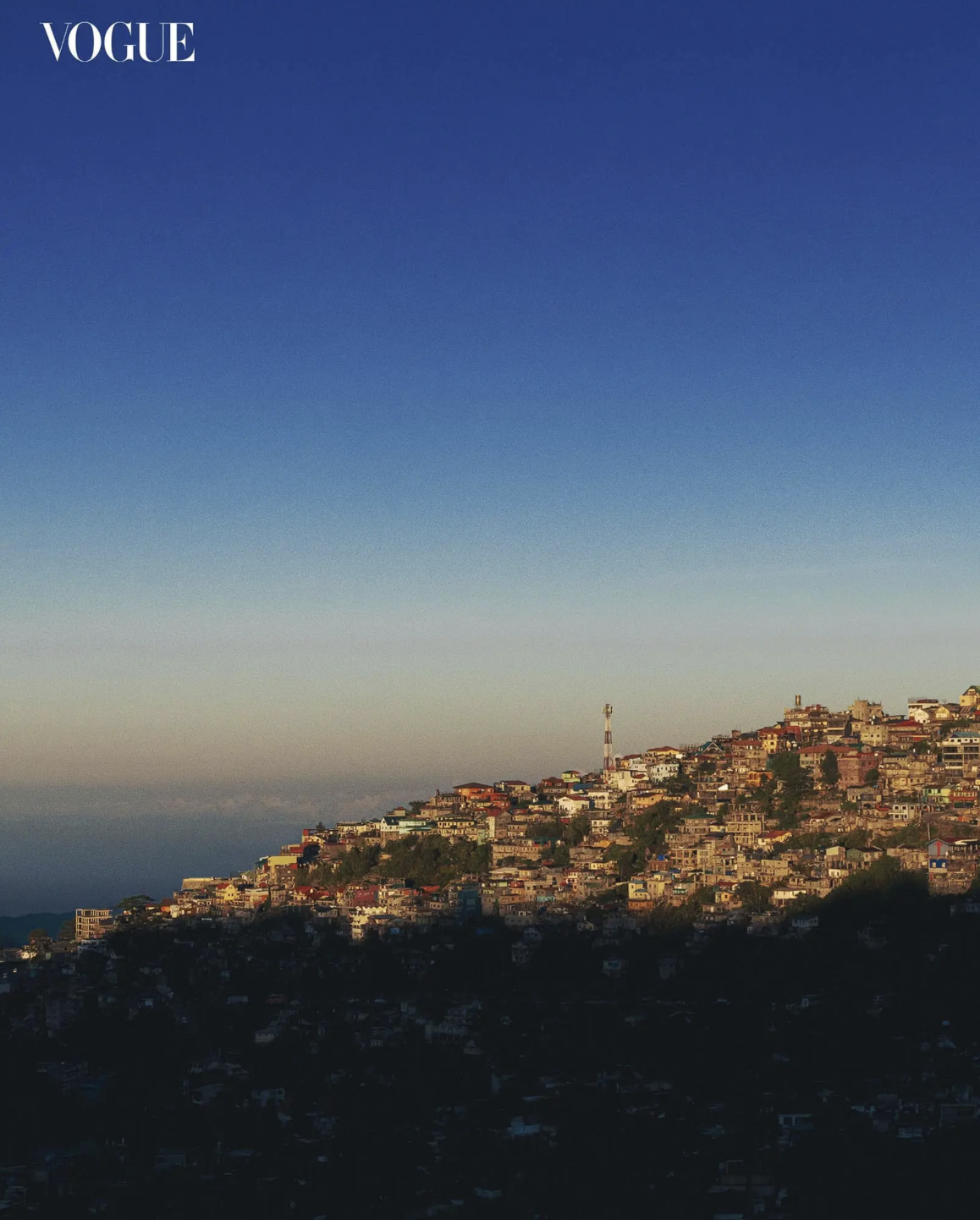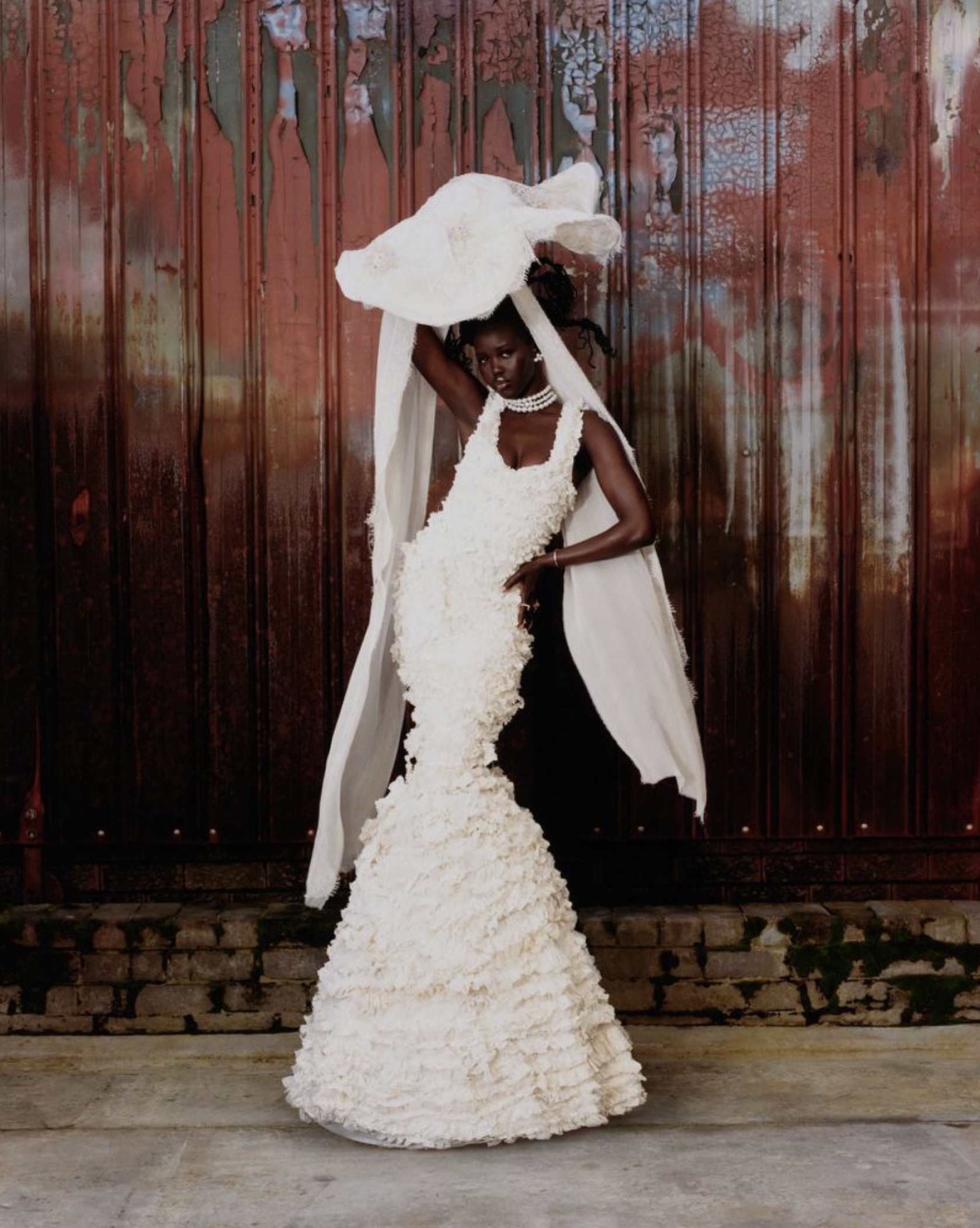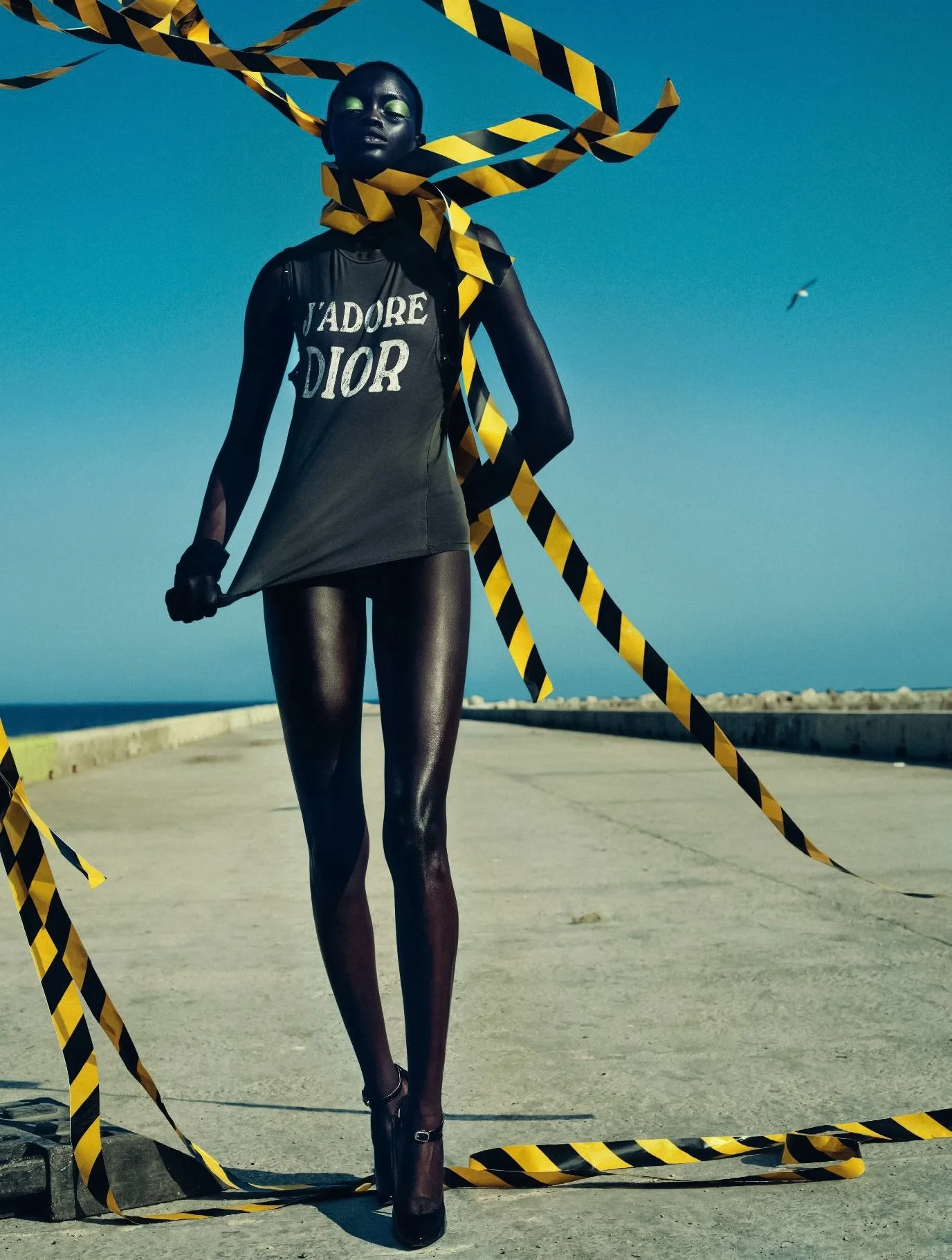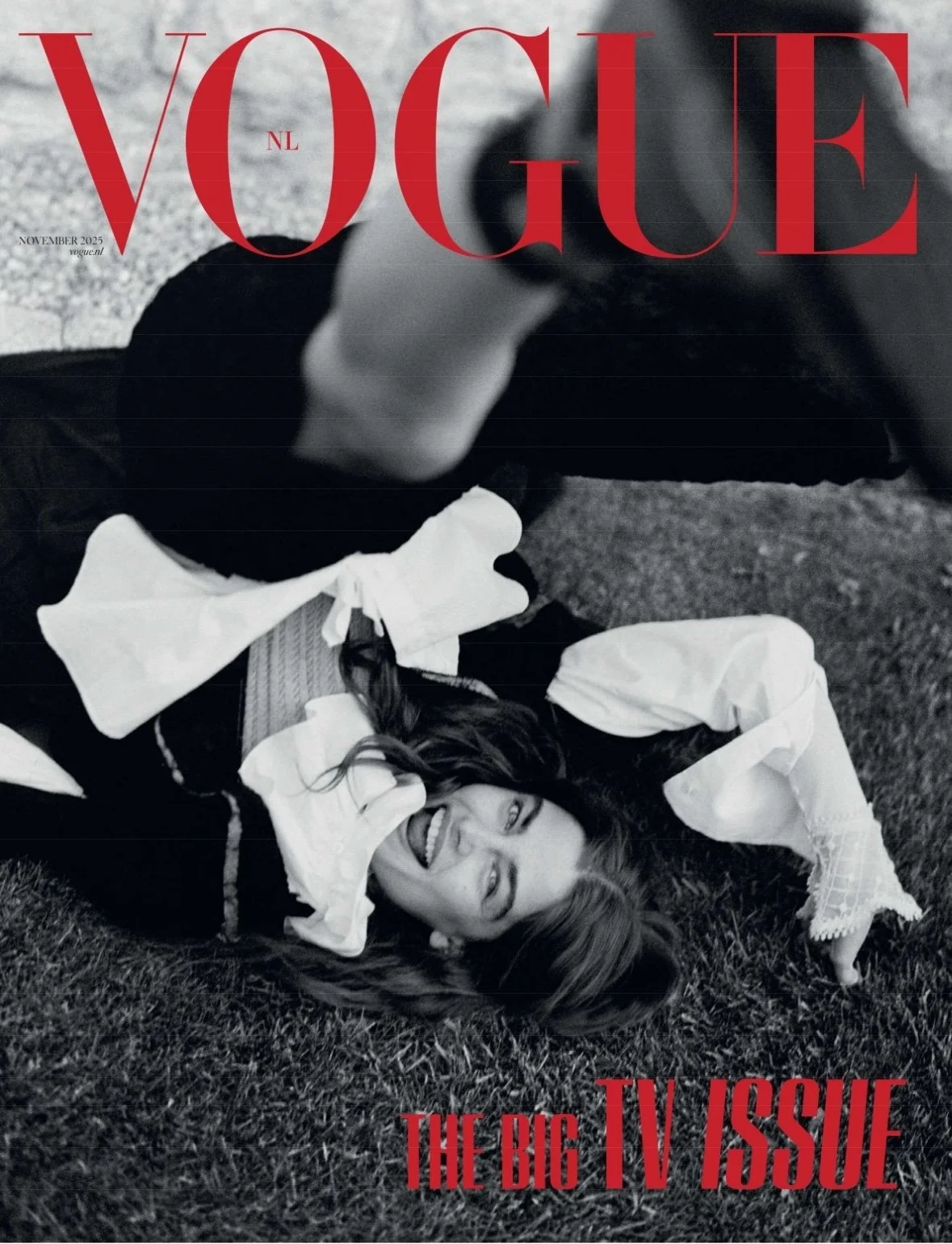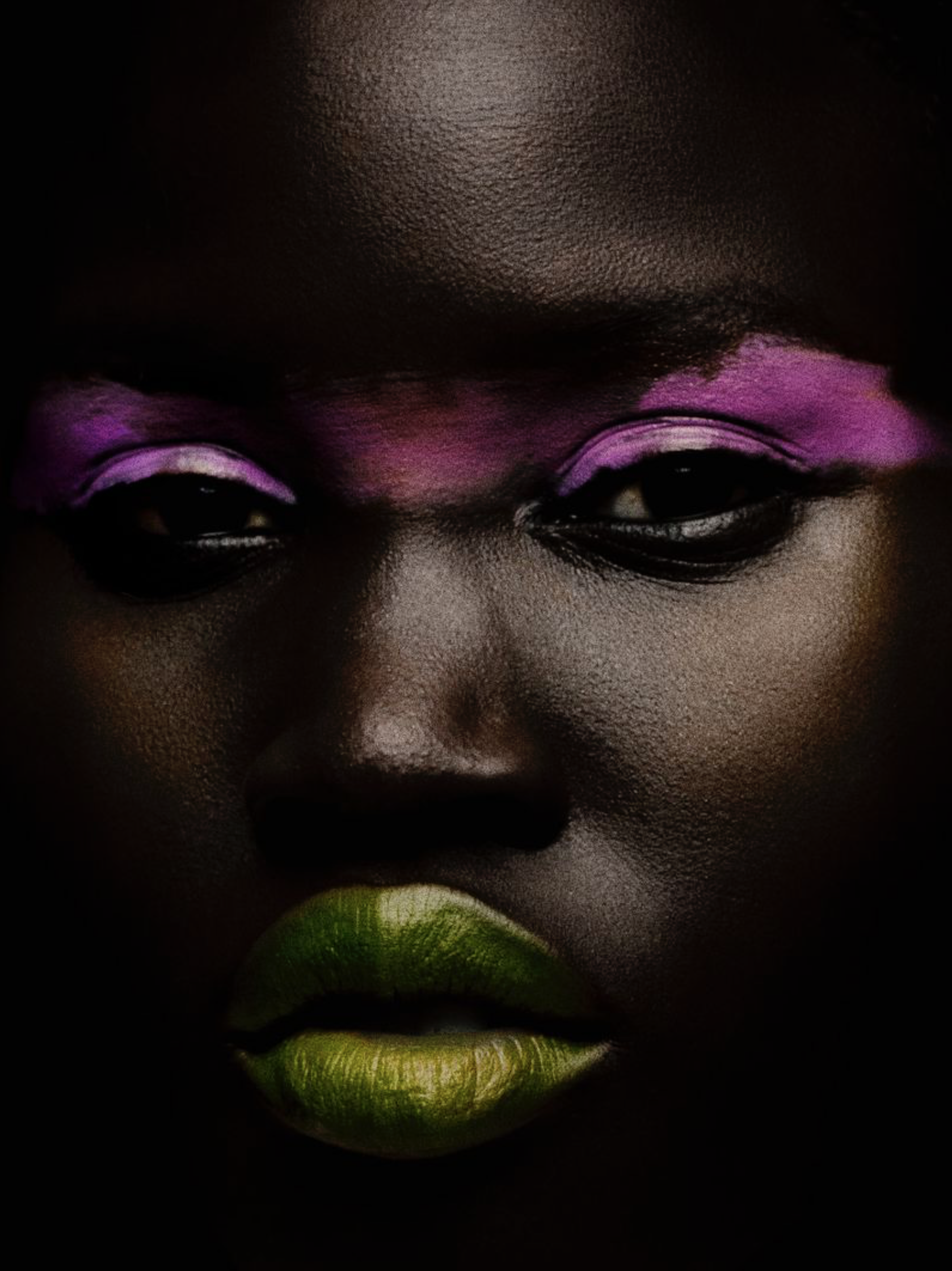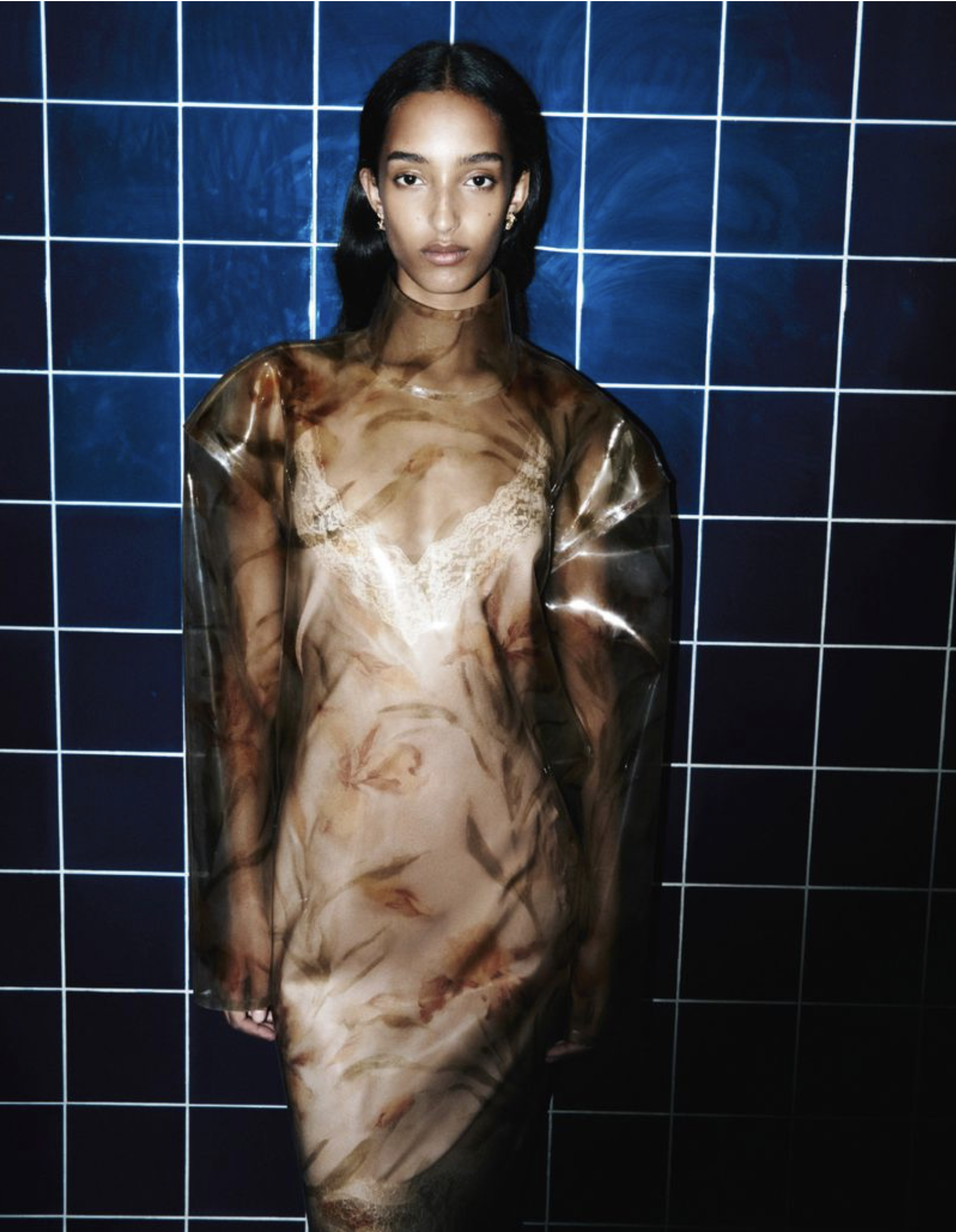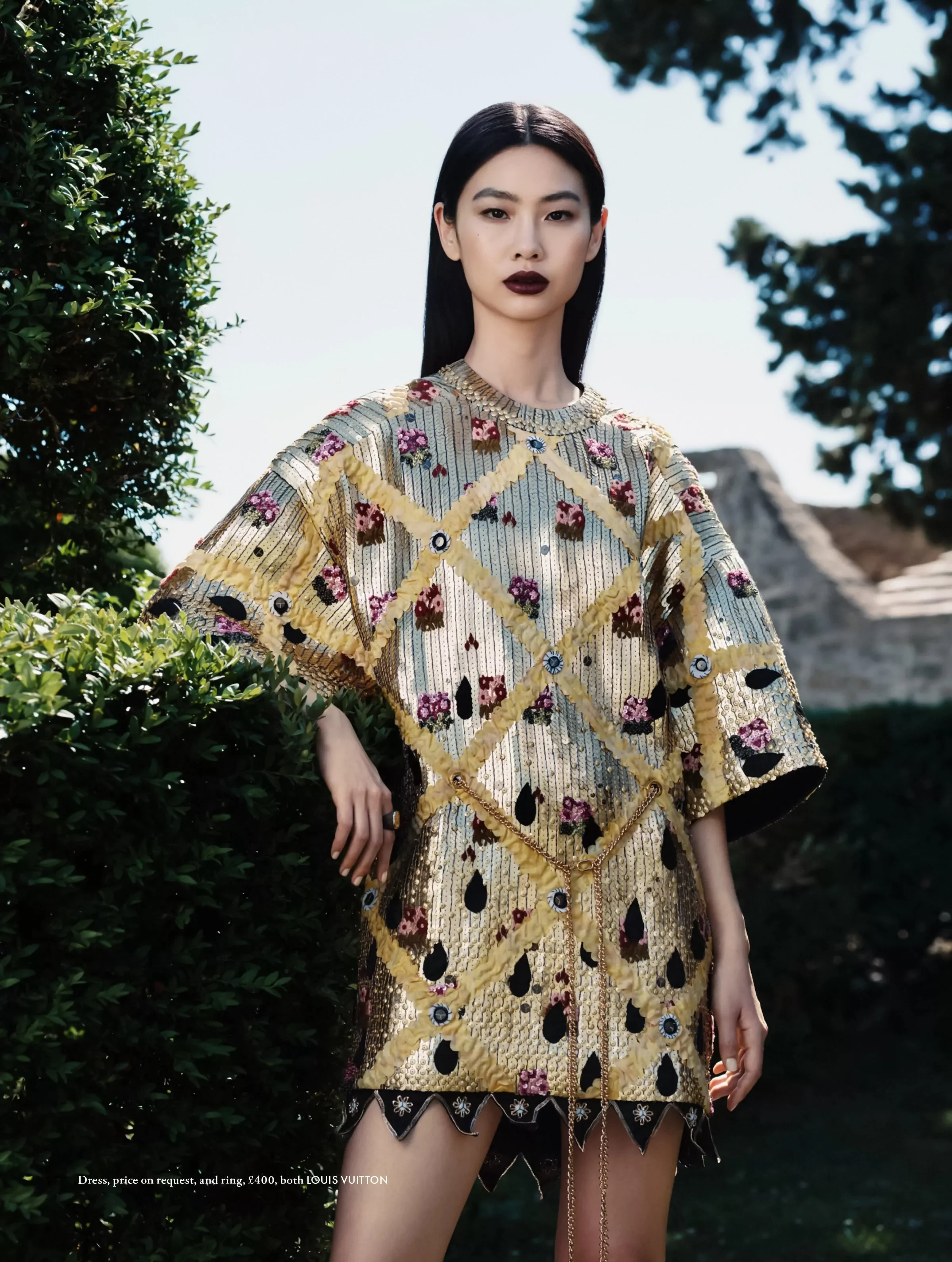Vogue Philippines Takes Us to Baguio and Cordillera Cool, Lensed by Borgy Angeles
/Vogue Philippines takes us to ‘Baguio and Beyond: Fresh Fashion Framed by Cordillera Cool’, the cover story for its February 2025 issue. Manila-based photographer Borgy Angeles [IG] captures the vibrancy of Baguio — if not its history and America’s role in creating it [literally]. The issue extends a fantabulous embrace of the city’s creativity and deep expression of indigenous Filipino culture.
We meet at the Cordilleras, where “craft, community, and indigenous wisdom reverberate through the land. Models Lake Cabrias, who the team scouted from its Manila casting call, and Fofai, who hails from the Kalinga region, hold handwoven lampshades on their hips and wear Filipino designers’ works inspired by the crafts that come out of these unique, divine-inspired lands.
Here, they prance and dance between vast patches of green land and clear, blue skies, imbibing a vibrancy that is felt in bodies and baskets both. Art and life come together in Baguio and beyond. This is dopamine dressing and living in concert with the artistic glories of nature at her very best. We find ourselves in a visual art gallery totally foreign to the little black dresses of New York City.
AOC notes that sophisticated ladies of means were bathed in color 50 years ago. These colors reigned supreme from New York City to Khartoum and back to Palm Springs. Of course, we were awash in optimism in those years and not surrounded by increasing rates of global depression.
Five decades ago, America was no longer a colonial power in the Philippines, after formally recognizing the country’s independence on July 4, 1946. AOC details that relationship at the end of this post.
Vogue Philippines expresses deep pride in sharing its creative footprint with the world. The top of page link gives you detailed info about all the fashions featured in this story. The treasures of Baguio are styled by fashion director Pam Quiñones and fashion editor David Milan. / Makeup by Booya; hair by Mong Amado
We can be happy to see this color-saturated fashion panorama. But the raffia-inspired, natural weaves in neutral colors also offer a calming and sophisticated connection to nature.
America’s Colonial Ties to the Philippines
The American colonization of the Philippines happened through the Treaty of Paris at the close of the Spanish-American War in 1898. Months later, the Philippine-American War broke out in 1899, as Filipino revolutionaries sought genuine autonomy after years of Spanish dominance.
The war, which lasted until 1902, was marked by brutal combat and significant casualties, ultimately resulting in the establishment of American sovereignty over the islands.
Under American rule, the colonial administration implemented significant changes, including the introduction of public education, infrastructure development, and gradual political participation for Filipinos. American colonization fostered economic growth and modernization while simultaneously imposing cultural and political changes not necessarily welcomed by the Filipino peoples.
The Transformation of Baguio
The development of Baguio as a hill station is intertwined with the American colonial administration‘s need of a retreat from the sweltering heat of the lowlands. Early-on after ‘inheriting’ the Philippines from the Spanish colonial power, the Americans turned their attention to Baguio, a region that promised a cool climate and refreshing landscape, reminiscent of their USA homeland.
Governor-General William Howard Taft set in motion plans to establish Baguio as the summer capital of the American colonial government. Architect and urban planner Daniel Burnham was commissioned to draw up a plan for the city, integrating classical city planning with local topography. Burnham's vision included wide roads, circular parks, and government buildings that blended harmoniously with the terrain.
Infrastructure development was prioritized, leading to the construction of the Kennon Road, which provided vital access to the mountainous region. Throughout the years, Baguio transformed from a pastoral highland into a bustling city. Its original development as a hill station laid the foundation for its emergence as a center of education, tourism, and culture in the 21st century Philippines.
The Drive of Filipinos for Independence
Over the years, the increasing political engagement of Filipinos and the influence of a growing independence movement fueled aspirations for self-governance. By the mid-1930s, the passage of the Tydings-McDuffie Act laid the groundwork for the eventual transition to independence, granting the Philippines Commonwealth status with a promise of full independence after a ten-year period, which culminated in the proclamation of Philippine independence on July 4, 1946.
The plan did not anticipate the impact of World War II on the region. Its impact on the drive for Philippine independence was profound, serving as both a catalyst and a transformative force in the nation's journey to sovereignty.
WWII Japanese Occupation of the Philippines
The brutal occupation by Japan from 1941 to 1945 and the extensive destruction left by the war exposed the vulnerabilities of colonial dependence. The Filipino people's desire for full autonomy was both understandable and a high priority. They experienced immense hardship and witnessed the fragility of external promises of protection from an America at war with Japan, leading to a stronger nationalistic fervor and a unified demand for independence.
The attack on Pearl Harbor on December 7, 1941, marked a pivotal moment as Japan aimed to establish dominance in the Pacific, triggering the United States' entry into the war. Within hours, Japan launched a coordinated assault on the Philippines.
The war and immense suffering of the Filipino people highlighted the changing attitudes in the United States towards its own colonial responsibilities. America was happy to deliver independence to the Filipino people as planned.
Baguio’s Indigenous People
The area that we now know as Baguio was originally inhabited by the Ibaloi and the Kankanaey peoples, who are part of the larger Igorot ethnic group. These indigenous communities lived in the highland regions of the Cordilleras long before Spanish colonization.
Their customs, crafts, and agricultural practices continue to be an integral part of Baguio's identity. The city's numerous festivals, such as the Panagbenga, or Flower Festival, showcase this indigenous heritage alongside modern influences, celebrating both local folklore and contemporary artistry.
Baguio's cultural scene is further enriched by the presence of other ethnic groups and communities, including the Ilocanos and Pangasinenses, contributing today to the city's vibrant tapestry of languages, cuisine, and traditions AOC honors with great respect in this post. ~ Anne
